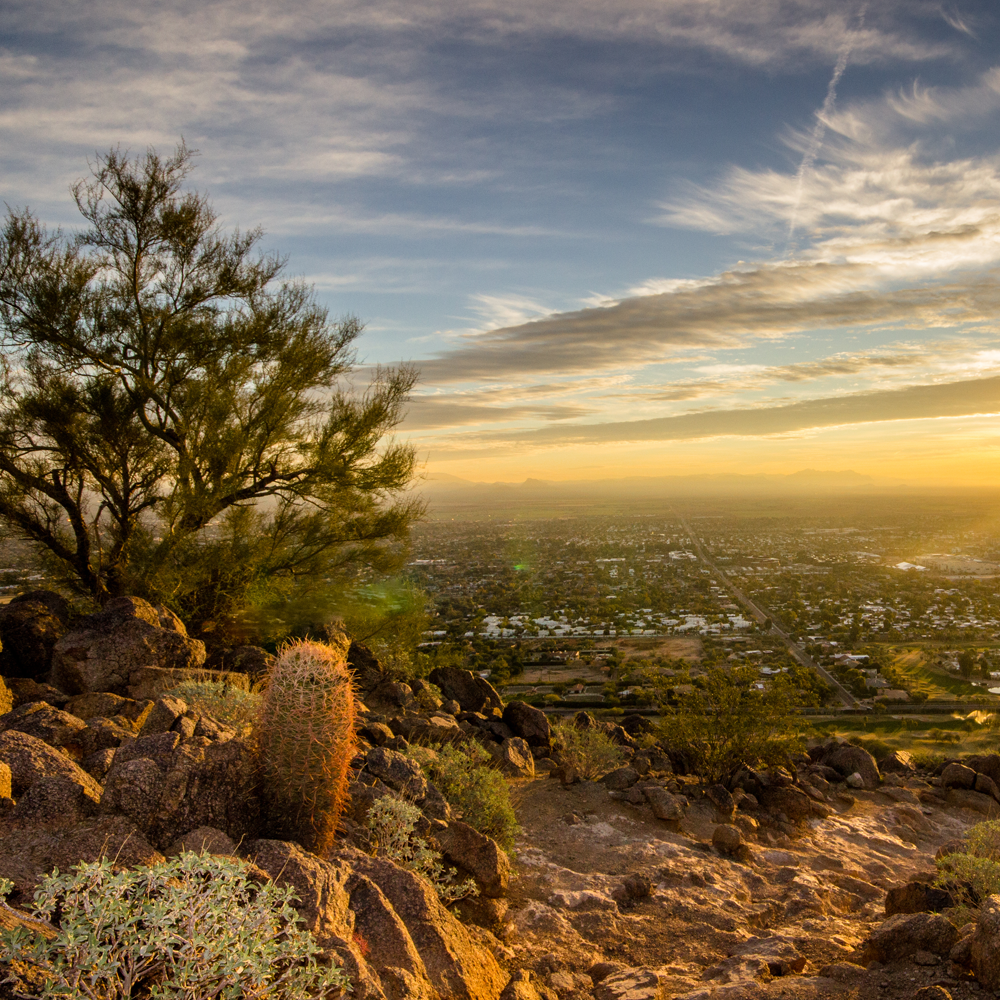Adapting our Water Planning and Habits to our Changing Climate

By Warren Tenney
Arizona’s weather continues to break records that we prefer not to brag about. After experiencing the driest monsoon on record in Phoenix and record-breaking heat that has continued into the fall season, it remains clear that our climate is becoming more drastic, and we must continue to adapt accordingly.
The ten AMWUA municipalities understand that a hotter and drier climate must be factored into their near and long-term planning and management of their water resources and infrastructure. This year has been a stark reminder of the importance of those actions. The National Weather Service has reported that this year's monsoon season dropped only 0.15 inches of rainfall from June 15 to September 30 in Phoenix. That’s the driest since the agency began keeping records in 1895. The previous mark was 0.35 inches in 1924. It was also the hottest July and the second-hottest August on record. In addition, Phoenix set another record with persistent, relentless heat that resulted in a 31-day streak of highs at or above 110 F. Plus, we are experiencing a record-breaking hot summer. All this data confirmed what we already knew – it has been a scorching summer that dragged out far longer than it should, impacting so many areas of our lives, including how we utilize our water supplies.
Along with the hotter and drier climate we have been experiencing locally, water managers of our communities are continually factoring in how increasing arid conditions in the Rockies are impacting their supply of Colorado River water. Despite an extremely favorable wet winter, the reality remains that the Colorado River is producing less water as conditions in the Colorado River Basin continue to be hotter and drier, like everywhere else in the West. As our climate has become warmer and drier, the snow is melting and evaporating far sooner in the spring, which means less moisture flows into streams and rivers and ultimately into the Colorado River. Even with an above-average snowfall like this past winter, the projected runoff we anticipated to see in the Basin decreased by more than 750,000 acre-feet from April to October. To give you a better sense of how much water that is – based on calculations by ADWR - one acre-foot would serve anywhere from three to four households in the Phoenix Metro area for a year, which totals 2.6 million homes. This further confirms that with less Colorado River water in our future, our long-term drought conditions are changing hydrology across the West, meaning there will be less Colorado River water delivered to Arizona.
This once again reiterates the importance of long-term planning and how our current actions must continue to adapt accordingly. Despite a favorable wet winter both in the Rockies and here in Arizona, overall hydrologic trends and the long, hot summer are why the AMWUA cities are using this time to plan, invest, and ultimately prepare for what will likely result in larger reductions in Colorado River water.
This reality check does not mean there is a need to panic. Instead, it is a reminder of how the ten AMWUA cities have always understood that wise water management is the foundation for our communities to thrive because we live in a desert. They will continue to effectively plan, manage, and invest in their water resources and infrastructure, as they have always done. This includes demonstrating a 100-year Assured Water Supply to meet the water demands of current residents and planned development. The ten AMWUA cities also continue to create new development standards, such as Phoenix’s recently adopted Sustainable Desert City Development Policy, as well as pursuing advanced water purification and expanding Bartlett Dam that could result in more water being available from the Verde River. Additionally, they have supported the state’s investments in long-term water augmentation, reuse, and conservation through the Water Infrastructure Finance Authority (WIFA). Our cities will also remain in the current stages of their drought and shortage preparedness plans that ensure each city is best prepared based on its own specific water resources, infrastructure, and customer needs.
Individually, we must accept that as our climate changes, so must our habits. We all have a responsibility to help mitigate the impacts of a hotter and drier climate, and one critical way we can do that is by upping our conservation game to ensure a sustainable future. Conservation actions are more vital than ever as pressures on our water supplies increase. While reducing your water use won't solve the Colorado River shortage, conservation enables your communities to maximize and stretch all water supplies – this is crucial when dealing with the consequences of a historic drought and shortages. So now, as the weather is set to cool, it is a prime opportunity for all of us to look at ways to increase our water efficiency outdoors and establish drought-tolerant landscapes that are more resilient through our extremely hot and dry cycles while utilizing less water.
We are in this together, and through long-term planning and short-term actions, we can collectively adapt and be better prepared for whatever challenges Mother Nature may throw our way and the impacts that follow.
To print or save this week's blog, a PDF version is available HERE.
For over 50 years, the Arizona Municipal Water Users Association has worked to protect our member cities' ability to provide assured, safe, and sustainable water supplies to their communities. For more water information, visit www.amwua.org.
To stay informed, sign up for the AMWUA blog